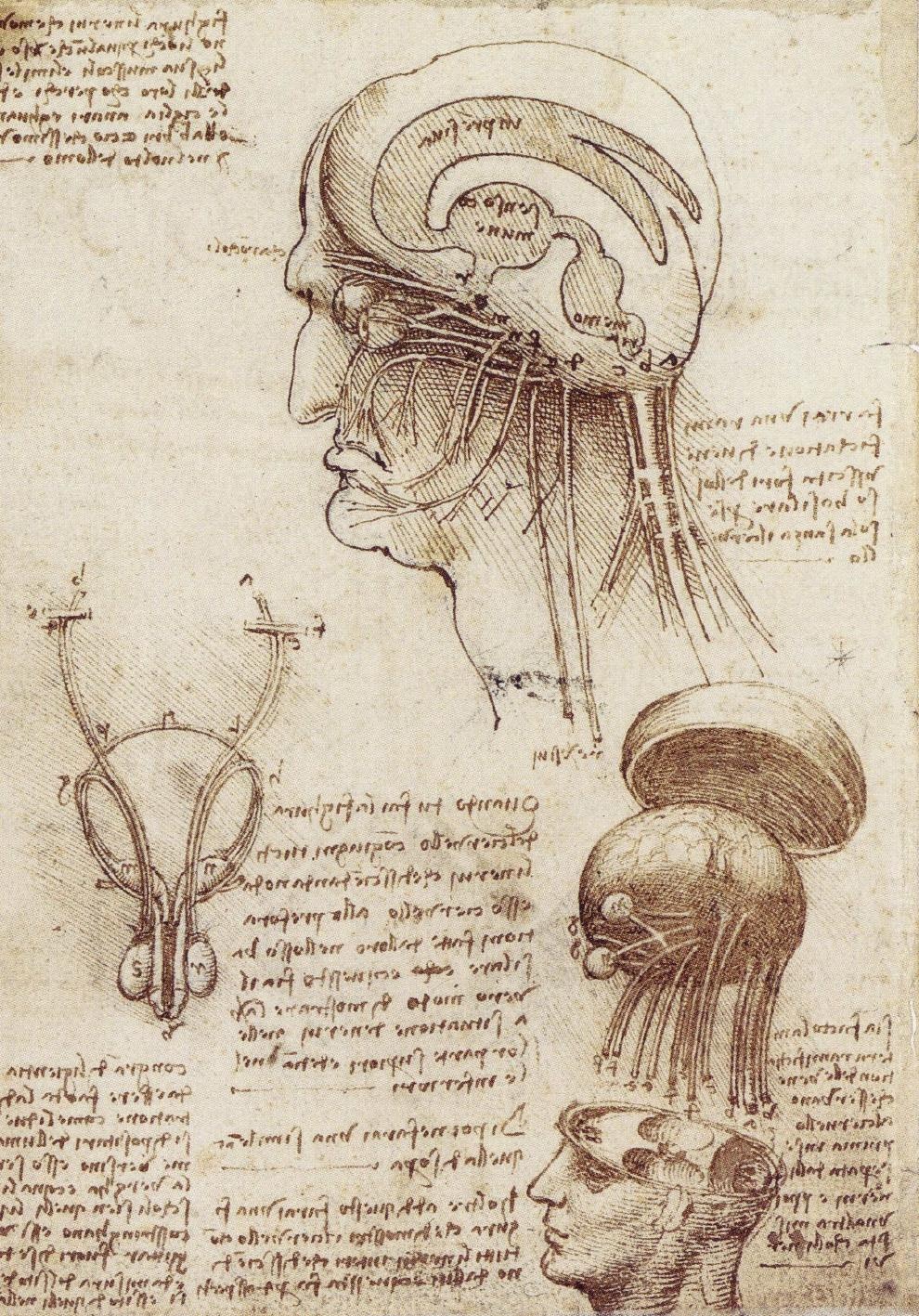Art and science may seem like two disparate fields at first glance, but they share profound connections at their core—creativity, inquiry, and humanity. During the Renaissance, polymaths like Leonardo da Vinci seamlessly blended art and science with his anatomical drawings, bridging the gap between expression and discovery. This article explores how art permeates every aspect of life to elevate science and vice versa, revealing a symbiotic relationship that enriches both domains. By examining this interplay, I aim to inspire and remind the NICHD community of the ways in which art can enhance scientific innovation and understanding.
Why do we have art?
Art is, among other things, the result of humans expressing themselves through various mediums. Given this broad definition, it is no surprise that art takes many shapes and forms. From the cave paintings of Lascaux to the intricate carvings of African masks, the vibrant colors of Indian Rangoli, and contemporary digital art, every culture and era has used art to reflect their unique experiences and environments.
I would argue that art is inevitable if there is a conscious being to feel and perceive the world. In other words, there is an innate drive within humans to interpret their surroundings, explore the feelings that arise, and express those feelings. In this way, art is a direct result of humans interacting with and seeking to understand their environment. Put another way, we are all artists, even if we do not always recognize it.
Why do we have science?
Science, on the other hand, can be thought of as the pursuit of knowledge through examining the natural world. Of course, anyone reading this newsletter is no stranger to this pursuit. We have all written papers and created posters to convey our pursuit of understanding the natural world.
Like art, I would argue that science exists because there is an innate drive within humans to understand their surroundings. From the time babies learn to crawl, they explore every surface and touch every object in pursuit of knowledge. In this way, science is a direct result of human curiosity and exploration. Ancient civilizations, from the early astronomical records of the Babylonians to the Egyptians’ advancements in medicine, showcase humanity’s timeless pursuit of scientific knowledge. We are all scientists, driven by our innate curiosity, even if we do not always recognize it.
The interplay between art and science
Art and science are bound by their shared foundation in human creativity and inquiry. This connection can be seen in the way scientific discoveries inspire artistic expression and vice versa.
For example, the discovery of the structure of DNA not only revolutionized biology but also inspired numerous artistic works, from visual representations of the double helix to literary explorations of genetic identity. Similarly, the relationship between music and mathematics highlights how mathematical principles underpin musical harmony, leading to the creation of new musical forms and instruments. Advancements in virtual reality technology, which has been used in fields ranging from military training to entertainment, now enable artists to create immersive experiences that transcend traditional boundaries. In all cases, humanity is what combines art and science into something truly extraordinary.
Art is not merely aesthetics; it represents the unique way each of us perceives and interprets the world, inevitably impacting the science we perform. Each person’s unique perspective draws them to different scientific fields. An appreciation for patterns might lead one to bioinformatics, while a visual learner may be drawn to fields that require spatial reasoning, such as molecular and structural biology. Fascination with symmetry may lead one to explore crystalline structures and materials science, while a person drawn to abstract concepts may excel in theoretical physics. These diverse perspectives shape the questions we ask and the problems we aim to solve.
Likewise, scientific tools and discoveries have helped unlock new art mediums and techniques. The development of photography, for instance, provided artists with new ways to capture and interpret reality. Historical figures like Leonardo da Vinci exemplify this blend between art and science. His anatomical drawings not only sparked human curiosity but also contributed significantly to the understanding of human anatomy, leading to profound changes in self-perception. Both art and science benefited. Today, fields like bioart, where artists use living tissues and organisms to create art, and scientific visualizations, which employ artistic techniques to illustrate complex data, exemplify the ongoing synergy between the two realms.
In conclusion, the exploration of creativity in art and science reveals a mutual journey of discovery. Art, with its ability to reimagine reality, uplifts and inspires scientific inquiry. Science, through its methodical understanding of the world, provides a rich source of inspiration for art. Together, these disciplines form a complementary pair, each enhancing and expanding the scope of the other. This synergy not only enriches our understanding of each field but also underscores the innate human capacity for creativity and innovation across all forms of inquiry and expression.

